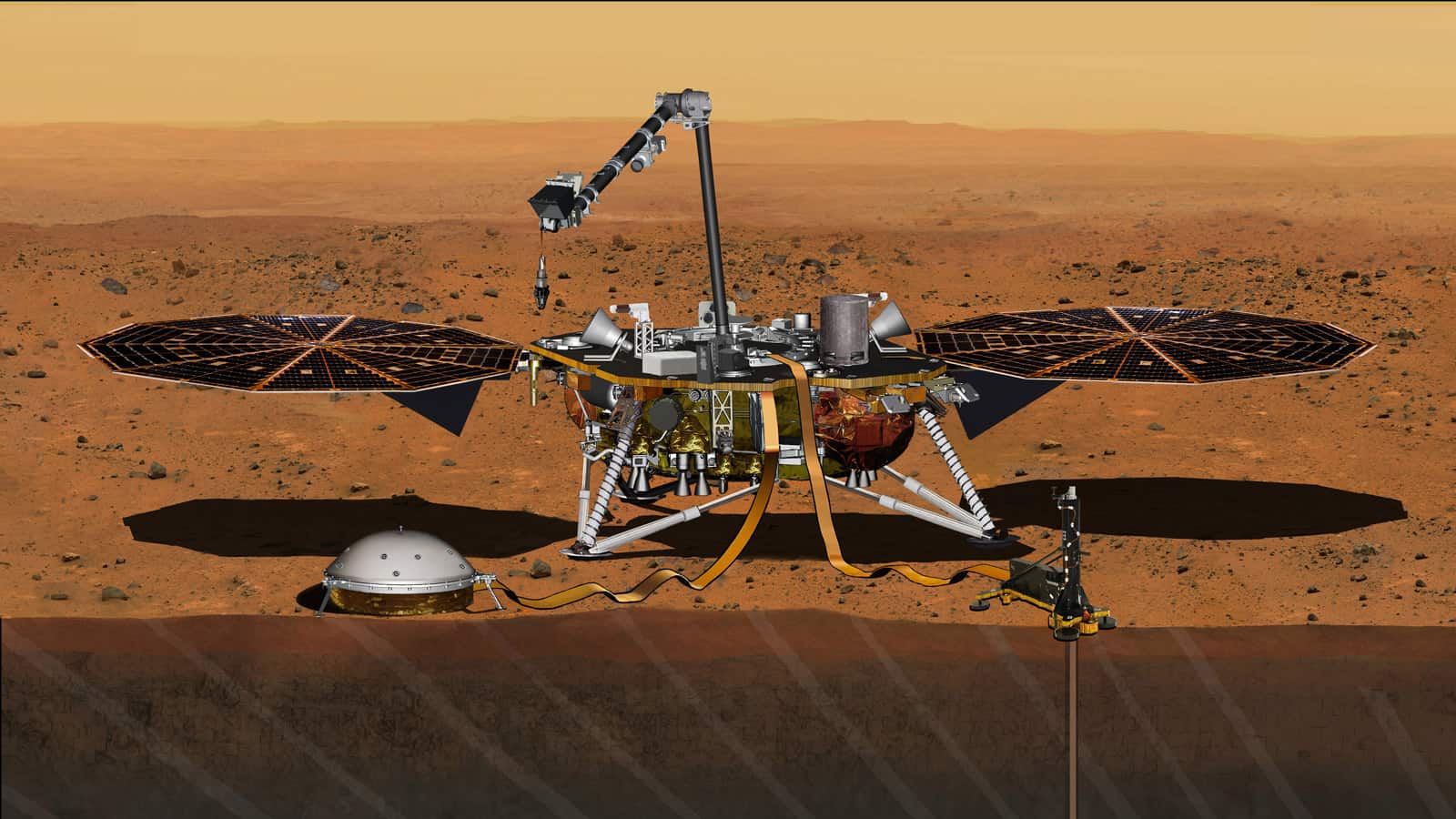NASA will soon launch a radical mission to answer one of the most asked-for questions when talking about the red planet: Is there Life beneath the Martian surface?

Planetary scientists are stepping up their game in search for alien life and are turning towards robotic explorers to unlock the secrets of the interior of planets like Mars.
The mission called InSight (Interior Exploration using Seismic Investigations, Geodesy, and Heat Transport), set to launch in 2018, will map the red planet’s interior in order to reveal any –potential— secrets our neighboring planet may hold.
The stationary lander was planned to launch in March 2016 but was delayed after researchers detected a leak.
“The science goals of InSight are compelling, and the NASA and CNES intend to overcome the technical challenges are sound,” said John Grunsfeld, associate administrator for NASA’s Science Mission Directorate in Washington. “The quest to understand the interior of Mars has been a longstanding goal of planetary scientists for decades. We’re excited to be back on the path for a launch, now in 2018.”
NASA’s InSight mission is due to launch in 2018, and a lot of people are excited, and they should be because of two important reasons.
First of all, the mission will provide NEW details of the Martian core which will tell scientists back on Earth how the rocky planets formed and what happened exactly to Mars in its long history.
Secondly, and perhaps most importantly, the InSight mission will reveal ‘snapshots’ of early Mars which h according to many scientists MAY HAVE SUPPORTED LIFE as we know it.
InSight will deliver two key components to Mars:
- First of all, it will deliver the Seismic Experiment for Interior Structure (SEIS) that will drill into the red plant and measure seismic resonance.
- Secondly, it will deliver the Heat Flow and Physical Properties Package (HP3) which will obtain precise measurements of the red planet’s rotation and heat loss.

NASA
has set a new launch opportunity, beginning May 5, 2018, for the
InSight mission to Mars. InSight is the first mission dedicated to
investigating the deep interior of Mars. Image credit: NASA/JPL-Caltech
Simply put, scientists will use the InSight mission to listen for Marsquakes on the red planet. If ‘tremors’ are recorded on Mars, these will offer insight into the inner characteristics of the red planet.
One of the primary objectives of the mission is to determine whether the red planet core is solid or liquid, and why its surface is not made of moving tectonic plates like Earth.
Scientists hope that the Insight mission will shed light on the process which made Mars turn into its current state, and will give new clues about the earliest beginning of the solar system.
Scientists hope that this way, they will understand more about how rocky planets of our solar system came into existence and what they may be hiding beneath the surface.
According to an article posted on NASA’s Jet Propulsion Laboratory’s website, NASA is on an ambitious journey to Mars that includes sending humans to the Red Planet, and that work remains on track. Robotic spacecraft are leading the way for NASA’s Mars Exploration Program, with the upcoming Mars 2020 rover being designed and built, the Opportunity and Curiosity rovers exploring the Martian surface, the Odyssey and Mars Reconnaissance Orbiter spacecraft currently orbiting the planet, along with the Mars Atmosphere and Volatile Evolution Mission (MAVEN) orbiter, which is helping scientists understand what happened to the Martian atmosphere.
http://www.ancient-code.com/alien-life-beneath-martian-surface-2018-nasa-mission-find/